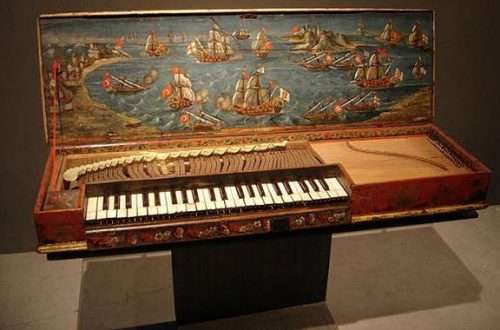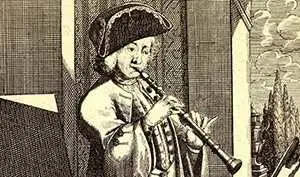
Purchase of a clarinet. How to choose a clarinet?
The history of the clarinet goes back to the times of Georg Philipp Telemann, Georg Friedrich Handel and Antonio Vivaldi, i.e. the turn of the XNUMXth and XNUMXth centuries. It was they who unknowingly gave birth to today’s clarinet, using in their works the shawm (chalumeau), i.e. the prototype of the modern clarinet. The sound of the shawm was similar to the sound of a baroque trumpet called Clarino – high, bright and clear. The name of today’s clarinet derives from this instrument.
Initially, the clarinet had a mouthpiece similar to that used in a trumpet, and the body had holes with three flaps. Unfortunately, the combination of the mouthpiece and the trumpet blast with the flute applicator did not offer great technical possibilities. Around 1700, the German instrument builder Johann Christoph Denner began working on the improvement of the shawm. He created a new mouthpiece consisting of a reed and a chamber, and lengthened the instrument by adding an expanding vocal cup.
The shawm no longer made very sharp, bright sounds. Its sound was warmer and clearer. Since then, the structure of the clarinet has been constantly changed. The mechanics were improved from five to nowadays 17–21 valves. Various applicator systems were built: Albert, Öhler, Müller, Böhm. Various materials were sought for the construction of the clarinet, ivory, boxwood and ebony were used, which became the most popular material for making clarinets.
Today’s clarinets are primarily two applicator systems: the French system introduced in 1843, which is definitely more comfortable, and the German system. In addition to the two applicator systems used, the clarinets of the German and French systems differ in the construction of the body, channel hollow and wall thickness, which affects the timbre of the instrument and the comfort of playing. The body is usually four-part with a polycylindrical hollow, i.e. its internal diameter is variable along the entire length of the channel. The clarinet body is usually made of African hard wood called Grenadilla, Mozambican Ebony and Honduran Rosewood – also used in the production of marimbaphone. In the best models, Buffet Crampon uses a more noble variety of Grenadilla – Mpingo. School models are also made of a material called ABS, commonly known as “plastic”. The dampers are made of an alloy of copper, zinc and nickel. They are nickel-plated, silver-plated or gold-plated. According to American clarinet players, nickel-plated or gold-plated keys give a darker sound, while silver keys – brighter. Under the flaps, there are cushions tightening the instrument’s openings. The most popular pillows are made of leather with a waterproof impregnation, fish skin, pillows with a Gore-Tex membrane or cork.

Beloved
Amati clarinets were once the most popular clarinets in Poland. The Czech company conquered the Polish market at a time when such instruments were only available in music stores. Unfortunately, to this day, most music schools have precisely those instruments that are not a pleasure to play.
Jupiter
Jupiter is the only Asian brand that can be safely recommended. Recently, the company’s instruments have become very popular, especially among beginner clarinet players. The Parisienne clarinet is the company’s best model, made entirely of wood. The price of this instrument, in relation to its quality, is a good proposition in the class of school models.
Hanson
Hanson is a very promising young English company, producing clarinets from school models to professional and made to order with individual customer specifications. Clarinets are carefully made of good quality wood and equipped with good accessories. Hanson adds the Vandoren B45 mouthpiece, Ligaturka BG and BAM case as standard to the school model.
Buffet
Buffet Crampon Paris is the world’s most popular clarinet brand. The origins of the company date back to 1875. Buffet offers a large selection of instruments and good quality serial production at an affordable price. It produces clarinets for both beginners and professional clarinet players. School models with the reference number B 10 and B 12 are made of plastic. They are lightweight clarinets for beginner musicians, very good at teaching young children. Their prices are very affordable. The E 10 and E 11 are the first school models made of Grenadilla wood. The E 13 is the most popular school and student clarinet. Musicians recommend this instrument mainly because of the price (low in relation to its quality). Buffet RC is a professional model, especially appreciated in France and Italy. It is characterized by good intonation and a nice, warm sound.
Another, higher Buffet model is the RC Prestige. It gained popularity in Poland right after it was released on the market, and is currently the most-bought professional clarinet. It is made of selected wood (Mpingo species) with denser rings. This instrument has additional hollow in the voice bowl to improve the sound of the lower register and very good intonation. It is also equipped with Gore-Tex cushions. The Festival model is more or less on the same level. It is an instrument with a nice, warm sound. Unfortunately, it happens quite often that the instruments in this series have intonation problems. Nevertheless, they are recommended by experienced clarinetists. The R 13 model is characterized by a warm, full sound – an instrument very popular in the USA, also known there as Vintage. Tosca is the latest model from Buffet Crampon. It is currently a model of the highest quality, at the same time characterized by a high price. Admittedly, it has a comfortable applicator, an additional flap to increase the F sound, nice wood with dense rings, but also, unfortunately, a flat sound, an uncertain intonation, despite the fact that these are hand-made instruments.





